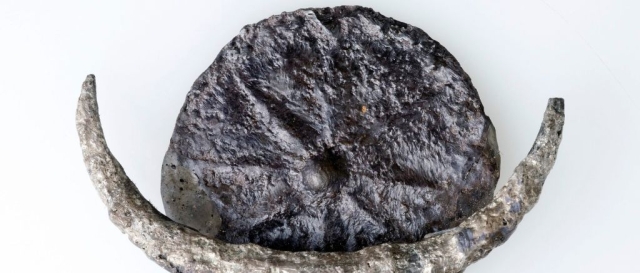One of the things academics use to try and discredit the bible is the reliance on silver by the pre-Israel Israelites. In Genesis, it is written that Jacob came to Shechem (today's Nablus) and paid 100 pieces of silver for a plot of land, the same land where it is believed Josephs's tomb lies. The problem was there was no evidence that the precious metal was used in Canaan and only came into the land 400-600 years later. However, new research shreds that theory as it appears the Canaanites did in fact deal in Silver.
About 3,600 years ago, Silver began to be used as a means of payment in the land of Israel along with the entire Levant. This is according to a joint study conducted by researchers from the University of Haifa and the Hebrew University. The study also identifies Anatolia as the source from which the silver came, indicating continuous and long-term trade with Asia Minor.
The use of silver pieces as a means of payment was known in the Mesopotamia region as early as the third millennium BC, but in the southern Levant region, known in the Bible as the Land of Canaan, it was common to think that such use was only in the Iron Age, starting from 3,100 years ago. The silver used in the new research, which completely alters modern archaeological opinion, was unpolished and unformed clearly indicating they were not jewelry. Additionally, the silver pieces were often found together at strategic places like a city’s front gate.
Jacob arrived safely at the city of Shechem in Canaan.
— 열정에 반응합시다~ (@Daniel_C_Rim) October 12, 2022
For a hundred pieces of silver, he bought from the sons of Hamor, the father of Shechem, the plot of ground where he pitched his tent.
There he set up an altar and called it El Elohe Israel.
Genesis 33:18-20
Dr. Tsila Eshel from the University of Haifa, who led the research, said: "Transitioning to an economic method based on silver coins, which do not spoil and have a small volume and weight compared to, for example, grain, brings with it many advantages and new possibilities that surely contributed to the urban and economic development of the entire area. But it also must mean silver coins continued to arrive frequently, evidence of long and stable trade relations with Anatolia, which were unknown to researchers prior to this study."
According to the statement released by the researchers "The initial perception was that the use of money as a means of payment was a phenomenon that characterizes the Iron Age, but as soon as we examined it in depth, we saw that the use of silver coins already existed in the Middle Bronze Age. The number of silver coins in the hoards at Tel Calves can illustrate this very well: in these hoards, artifacts were found like gold ornaments, which attracted most of the attention of the researchers. However, when we examined the composition of the hoards, it turned out that there were much more pieces of silver and the gold objects were the minority,"
Meanwhile, deep in the Bronze Age - Canaanites also used silver as currency, archaeologists deduce https://t.co/2ml16SUESN #Archaeology #Israel #Currency #Silver #Turkey
— ruthschuster (@ruthschuster) January 8, 2023
The University of Haifa added that the research was made possible thanks to the cooperation of the researchers with Dr. Zvika Tzuk, from the joint expedition for excavations in the Tel Gezer National Park of the Nature and Parks Authority and the Baptist Theological Seminary of New Orleans under the auspices of the Antiquities Authority. Other contributors according to the university included the Gerda Henkel Foundation, the Rotenstreich Foundation, and internal grants from both Hebrew University and the University of Haifa.


